Fitting the sleeve
The envelope test fitted, I prepare the wing for cover.
The system selected must be followed exactly to keep the aircraft airworthy. In the "PolyFiber" system, that means coating with PolyBrush.
PolyBrush ('Brush) has a pinkish cast to it, as can be seen in this picture. It provides a substrate for the cloth to stick onto the wing. And the color shows what areas have not been covered.
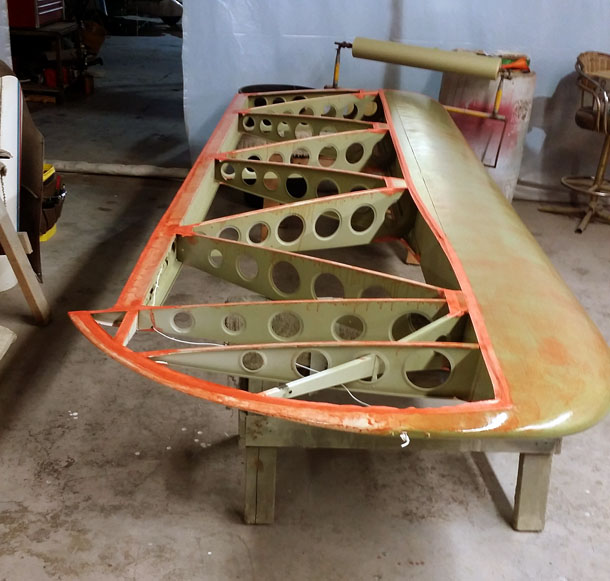
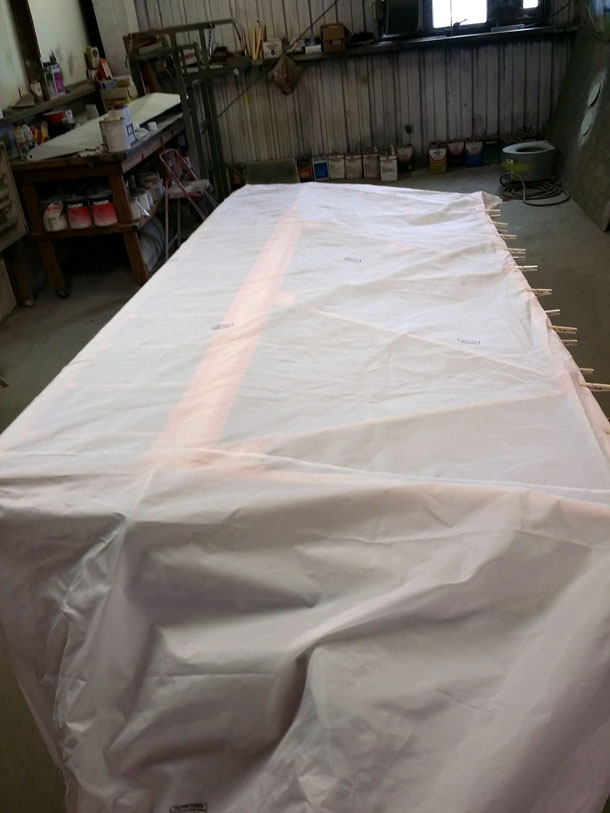
Here, the cloth has been fitted onto the wing after the PolyBrush ('Brush) has dried. You will note how loose it sits. Not to worry as cloth shrinks as much as 10% when it is heated. More on heating later.
The next picture shows the cloth fitted better to the wing. Please note the wooden clothes pins used. These are an essential part of cloth work!

It is always better when one works with experienced persons. The fine folks at Terrell Aviation have worked with PolyFiber (aka "the Stitts system') for some time and helped me fix the wing tip. Some of the epoxy paint had to be worked on and they worked me through that. The first picture shows the point of the aileron attach bay where new paint was needed. The second shows the area that I worked on to get that part just right.
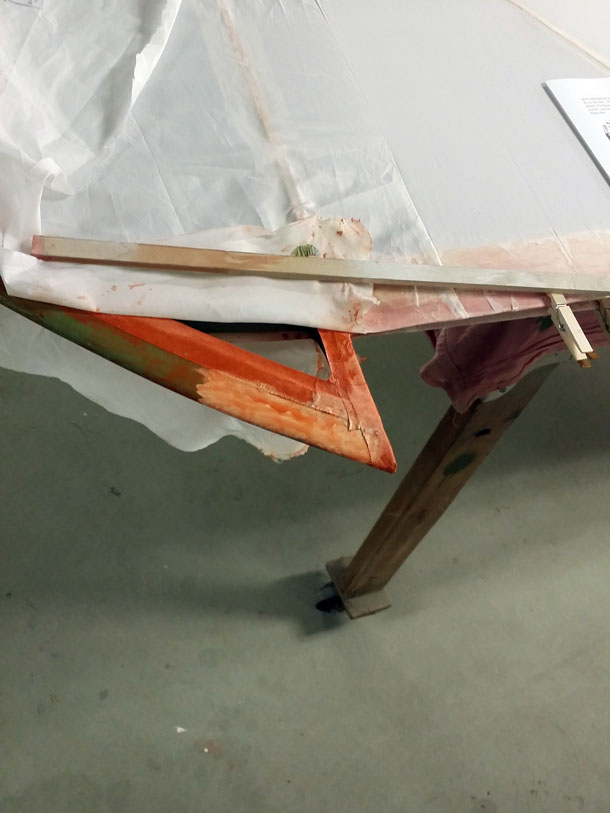

These pictures are after the final shrinking (350 degrees F.) and coating with PolyBrush.
The 'Brush seals the fabric weave. That keeps air from flowing through and gives the
wing it's effectiveness. It also allows paint to stick better.
Care must be taken on the front part of the bottom surfaces of the Ercoupe wings. The
43013 airfoil selected by Fred Weick has a "cusp," or concave surface to provide lift
at lower speeds. The PolyFiber process mandates PolyTack glueing around those areas
so the fabric will conform during shrinkage. Only one "PK" screw is used per rib to
maintain the `foil shape there.
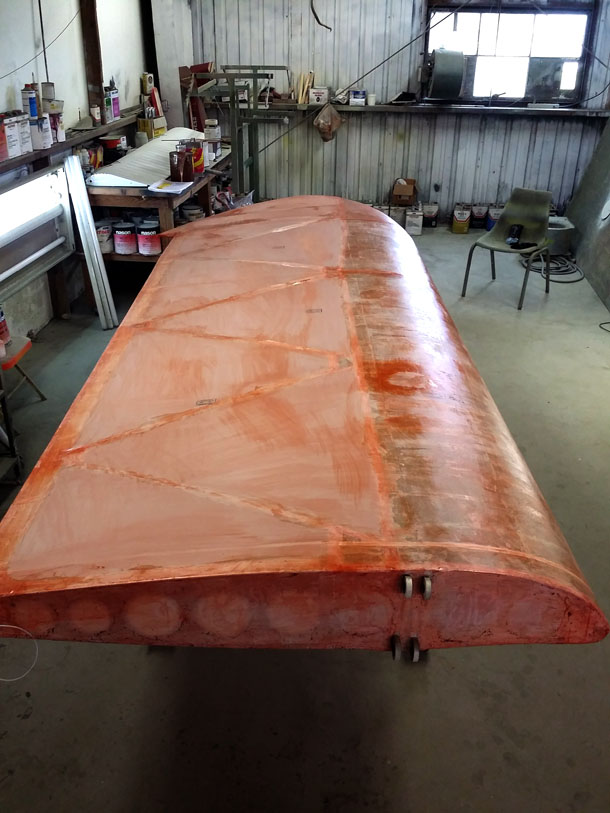
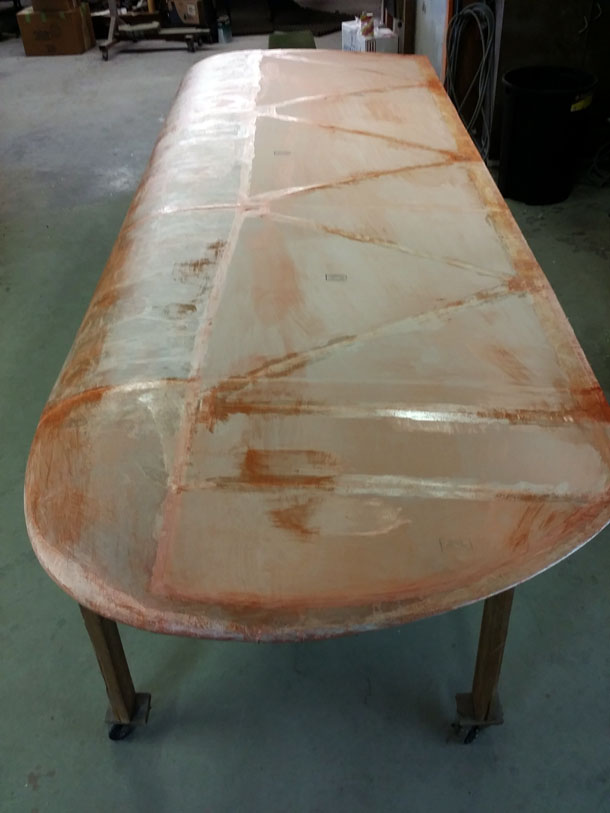
| << previous |